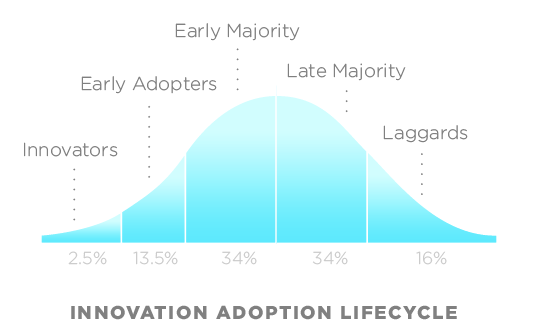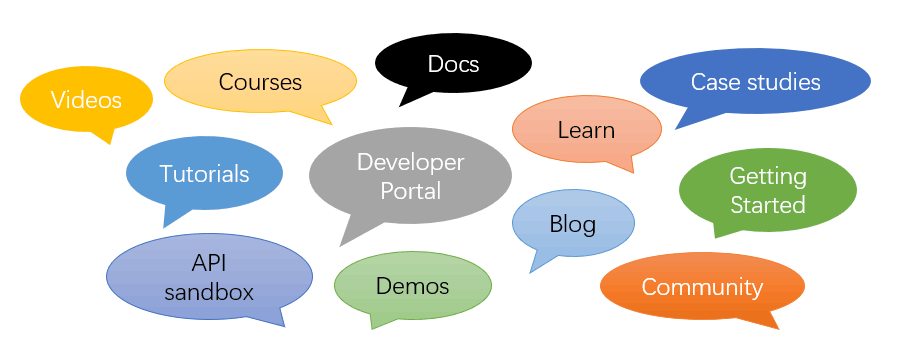Whole Product Technical Communication

Photo by Tara Winstead from Pexels
My previous post ended with a question: how to build a cohesive product experience with the different types of writings: copywriting, technical writing, and UX writing? This is a topic I’ve been pondering time and again. Here is the recent thought.
Global trends and technology buying research#
Let’s start with some observations of today’s high-tech industry.
From project management’s point of view, the Project Management Institute (PMI)’s PMBOK® Guide believes there are three global trends that are disrupting traditional business models and transforming products and services:
- Customer centricity: inverts the traditional model of organizations developing products and pushing them out to customers
- Software-enhanced values: software and the capabilities it can provide have become key differentiators
- Ongoing provision and payment: single-transaction services are being replaced with continuous provision and payment
From marketing’s perspective, LinkedIn’s 7th Annual Technology Buying Research summed up five key lessons for technology marketers to grow business in the evolving world:
- leveraging technology effectively is a core competency for all business functions
- there is increased competition for buyer attention
- technology buyers are spoiled for choice
- giving end users something exciting to talk about is critical
- as budgets are ever-more scrutinized, post-sale support is paramount. Marketers should seize the opportunity to help inform, drive, and optimize programs that unlock greater value for existing customers
Why so?
People, including customers and employees, are empowered by technology advancement. As Klaus Schwab said in his article about the Fourth Industry Revolution, “The possibilities of billions of people connected by mobile devices, with unprecedented processing power, storage capacity, and access to knowledge, are unlimited.” These possibilities are the driving force for organizations to adopt customer-centric strategies.
Challenge facing technology product#

Photo by Markus Spiske from Pexels
The advancement of technology has democratized technology. However, to realize the potential of any technology and to limit the harm it is capable of, organizations need to effectively share knowledge and educate technology users.
By effectively we mean at every stage of technology interaction. This every-stage-interaction is exactly the challenge many products and services are facing. To be more specific, technology information is important for today’s businesses, but organizations are struggling with incorporating this new requirement into their roadmap.
The culprit? Strategies of product marketing and technical communication are designed without taking each other into consideration.
Rethink technical communication#
If you ask what technical communication is, a standard answer is “the process of defining, creating and delivering information products for the safe, efficient and effective use of products (technical systems, software, services)” - tekom, Defining Technical Communication. It further explains that “information products are delivered at the main phases of the product lifecycle, which constitutes the information lifecycle of the product.”
Follow this line of thought, technical communication is largely confined to technical documentation, which in turn is regarded as part of product deliverables and published at the end of product development.
As long as you accept that “information products are delivered at the main phases of the product lifecycle”, it’s no surprise to see the similarities between Software Development Life Cycle (SDLC) and Documentation Development Life Cycle (DDLC), the more common terms for “product life cycle” and “information life cycle”.

But, is this sufficient to help us address the new challenge? In the changed landscape of technology industry, I believe it’s time to re-think both the scope of technical communication and its relation with product.
Technology adoption life cycle and whole product model#
While SDLC is still the trusted approach to software development, for today’s education-based marketing, documentation development or technical communication needs to take on an additional dimension, to expand beyond “the main phases of the product lifecycle”, at least beyond the product development lifecycle.
In the marketing classic Crossing the Chasm, Geoffrey Moore discussed the chasm in the technology adoption life cycle and proposed a simplified version of the whole product model.
The technology adoption life cycle defines the psychographic profiles of different adoption groups:
- innovators/technology enthusiasts: committed to new technology; take pleasure in mastering intricacies, “fiddling”
- early adopters/visionaries: look for strategic leap and breakthrough
- early majority/pragmatists: do not believe in technology for its own sake, believe in evolution, not revolution
- late majority/conservatives: convenience over performance, user experience over feature sets
- laggards/skeptics: not so much potential customers as ever-present critics, nevertheless, can teach high-tech industry a lot about what it is doing wrong

Rogers' bell curve from wikipedia
The original whole product model by Ted Levitt consists of four parts:
- Generic product: shipped in the box and covered by the purchasing contract.
- Expected Product: the minimum configuration of products and services necessary for the product to work but not included in the generic product.
- Augmented Product: the product fleshed out to provide the maximum chance of achieving the buying objective.
- Potential Product: the product’s room for growth with more ancillary products on the market and customer-specific enhancements.
Geoffrey Moore argues that the way to “design a whole product is to work backward from the target customer’s use case, filling in the blanks as you go along, either with new R&D, an acquisition, a partnership or an alliance”.
Whole product technical communication#
While the two adoption groups of innovators/technology enthusiasts and early adopters/visionaries may seem to be the ideal customers for high-tech products, to build a sustainable business, the products must be able to win over the mainstream market, which is guarded by the early majority and has a significant presence of late majority and laggards.
Understanding the dynamics in technology marketing and the psychographic profiles of different groups can help us formulate a holistic strategy that supports the whole product experience. And the good news is that this is not complicated.
To get started, all we need to do is to establish a new context, which includes two parts:
Identify the adoption stage of the product, use the psychographic profile of the adoption group to create personas for the target audience, what are they looking for?
Define the purpose of the technical communication project, where does the information sit in the whole product model?
Getting the two parts right can help us cope with real world scenarios, for example:
- For a new API product to launch, which information product should be given high priority, code examples or training courses?
- When do I need to plan for community content support?
- How to leverage the technical content created by the integration team, solution architects, and customer service department?
What do you think?
